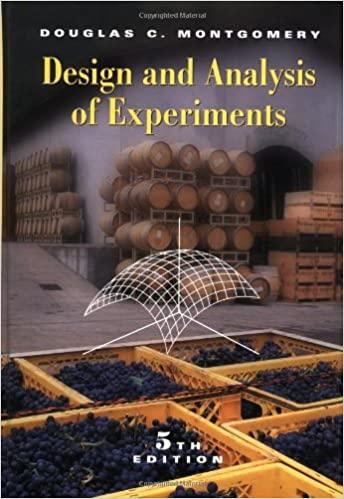In an article (Let's All Beware the Latin Square, Quality Engineering, Vol. 1, 1989, pp. 453-465), J.
Question:
In an article ("Let's All Beware the Latin Square," Quality Engineering, Vol. 1, 1989, pp. 453-465), J. S. Hunter illustrates some of the problems associated with 3k-pfractional factorial designs. Factor A is the amount of ethanol added to a standard fuel and factor B represents the air/fuel ratio. The response variable is carbon monoxide (CO) emission in g/m3. The design is shown below:
Notice that we have used the notation system of 0, 1, and 2 to represent the low, medium, and high levels for the factors. We have also used a "geometric notation" of -1, 0, and +1. Each run in the design is replicated twice.
(a) Verify that the second-order model
![]()
is a reasonable model for this experiment. Sketch the CO concentration contours in the xl, x2 space.
(b) Now suppose that instead of only two factors, we had used four factors in a 34-2 fractional factorial design and obtained exactly the same data as in part (a). The design would be as follows:
![]()
Confirm that this design is an L9 orthogonal array.
(c) Calculate the marginal averages of the CO response at each level of the four factors A, B, C, and D. Construct plots of these marginal averages and interpret the results. Do factors C and D appear to have strong effects? Do these factors really have any effect on CO emission? Why is their apparent effect strong?
(d) The design in part (b) allows the model
![]()
to be fitted. Suppose that the true model is
![]()
Show that if β̂j represents the least squares estimates of the coefficients in the fitted model, then
![]()
Does this help explain the strong effects for factors C and D observed graphically in part (c)?
Step by Step Answer:





